Welcome to the enchanting world of bonsai, where nature meets artistry in the most captivating way. The art of bonsai, originating from ancient China and perfected in Japan, is a meticulous practice that involves shaping and nurturing miniature trees into living works of art.
When we hear the word bonsai, we can picture a small tree that looks like an adult one. Basically, it’s a mimicry of our nature. What do you think? Can we find it randomly in nature?
In reality, not here and there. But a very few dwarf trees are found in unfavorable conditions where plant growth is really hard. Basically, Chinese Chan monks created the art around 5000 years ago.Chinese people named it penjing or pun-sai for using a pen, pan, or pun, which is the shallow earthen pot used to plant the tree.
We will look at the rich history, profound philosophy, and complicated skills that underpin this time-honored institution. Join us on this adventure as we uncover the secrets of bonsai, as well as its profound beauty and the contemplative process of producing these tranquil, awe-inspiring wonders.
Related Article: Bonsai For Beginners: How To Grow Bonsai Tree
You may also read: Bonsai Soil Mix: Essential Ingredients for Healthy Growth
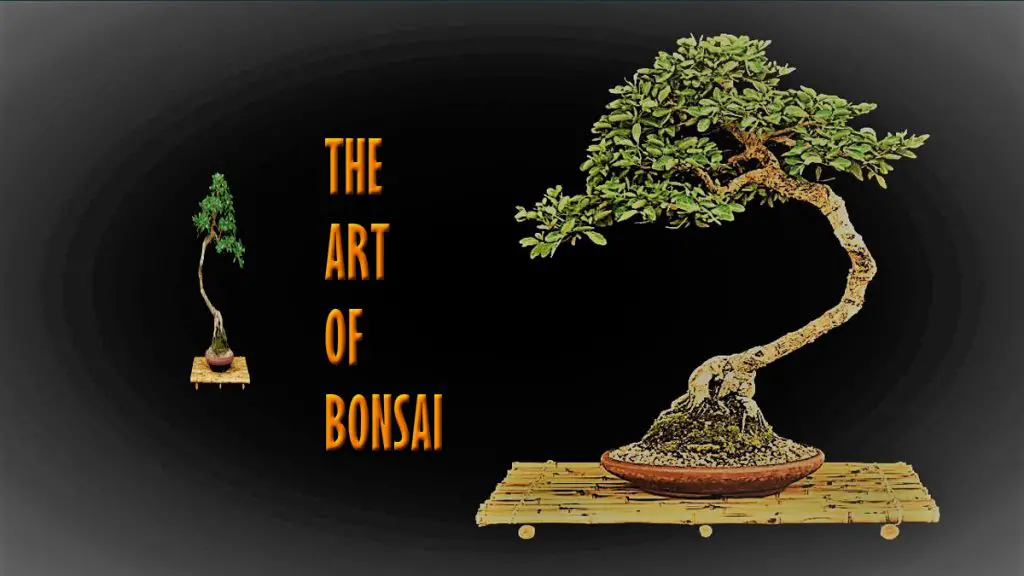
Related Article: 10 Best Bonsai Trees for Beginners
You may also read: The Fascinating World of Acacia Bonsai Tree
What Is Bonsai?
Bonsai is a Japanese word made with two words: bon meaning “thin bowl” and sai meaning “planted tree or plant.” So, the literal meaning of bonsai is a tree planted in a pot or tray. And actually, bonsai is the art of growing miniature trees in pots. This art started in China and was later taken up by Japan for its religious and political aspects.
The interesting part is that bonsai may look like dwarf trees, but genetically they are not. Basically, they possess the same genetic functions as a fully mature tree. To make bonsai, some physical techniques have been used, like pruning, root reduction, repotting, defoliation, etc.
Can you guess? If you plant a bonsai on land, what will happen? The answer is going to amaze you, I’m sure. It‘ll grow to its full length as quickly as possible. Biologically, there is no difference between a bonsai and a normal, full-grown tree of that species.
It is said that making bonsai is a cruel technique to mimic nature. Is it true? What’s your opinion? If you ask me, I will surely say it’s true. Indeed, it’s a cruel technique to make a full-grown tree look like a dwarf by providing less food and cutting or pruning it down to slow its growth rate. But if I consider the aesthetic beauty of it, it flatters me every single time.
Nobody can say the work of bonsai is done or complete. The art of bonsai can never be finished because it is constantly evolving. If the plant is alive, it has to be taken care of on a daily basis. That’s the reason it is an unfinished art passed down by generations of humans. Moreover, its economic value increases as it ages, as does its beauty at its peak.
History
If you close your eyes for a moment and think about China, what comes to mind first?
I bet everyone will see trees full of flowers. Chinese people have always loved nature, trees, and flowers. Moreover, the Chinese were equally captivated by miniaturization. They love using miniature trees, shrubs, and plants to decorate their landscapes. It is not by chance that the art of bonsai originated in China. It was originally practiced by the elite of society and used as a luxurious gift.
During the 12th century, Japan adopted many cultural and religious attributes from China, and the art of bonsai was inaugurated there in the Kamakura period (1185–1333).
After World War II, bonsai were introduced by US and European soldiers who were in Japan during the war. They showed their interest and tried to recreate it. And afterward, bonsai spread throughout the world.
Chinese History
In China, penjing started about 5000 years ago. The ancient explorers were the first to find the miniature trees growing in the mountains. Those trees become twisted as a result of the harsh environment and growing challenges.The ancient wise believed that replicating natural miniature objects could concentrate magical properties that they could access.
Around 2300 years ago, the Chinese began to recreate landscapes in order to incorporate their five agent theory.There is a story about an emperor of the Han Dynasty (206 B.C. to 220 A.D.) who recreated his entire empire in a landscape and included miniature features of hills, valleys, rivers, lakes, and trees.
After around 1000 years, the Chinese started to recreate these in bronze, during the Chinese bronze age, for political and religious views.
Japanese History
Some medieval handscrolls discovered in Japan depict dwarf trees.The Japanese were fascinated by many things and introduced them to their culture.
During the reign of the Han dynasty, Chinese monks traveled to Japan and other Asian countries and taught many astounding things about Chinese culture. Chinese Chan Buddhist monks visited Japan’s monasteries and taught their different values and arts to the Japanese. At that time, Zen Buddhism formed and imported the values and art of Chan Buddhism.
Zen Buddhist monks learned the techniques of penjing, created it in their own way, and named it bonsai. The Japanese used a slightly deeper pot than the Chinese and set the landscape according to their attributes. And afterwards, bonsai spread around the world from Japan.
There is a living bonsai tree present in the Tokyo Imperial Palace that dates to the 17th century and is considered a national treasure of Japan.
Western History
Westerners heard some stories about potted dwarf plants from 1604 onward, but they observed and knew the veracity of bonsai, especially in the late 19th century.
Japan happened to take part in some exhibitions in U.S. and European countries with dwarf potted plants and the specimens shown in the exhibitions went to the west after the closing fairs. By 1907, the art of bonsai had spread throughout the world.
In 1950, the first book related to bonsai was translated into English. And afterwards, it started a craze. In 1967, the official American Bonsai Association was formed. In 1970, a large exhibition was held at Expo 70, which attracted a lot of foreigners, including US visitors. And from then on, Bonsai started attracting people from various regions and cultures.
It now has an enormous number of books, articles, associations, magazines, webinars, and other resources.
Related Article: Bonsai Species: A Comprehensive Guide to Stunning Miniature Trees
Related arts
There are so many arts introduced by the Chinese and Japanese that are inspired by the art of bonsai. Do you know any? Let me introduce some of them to you.
- Ikebana is the art of Japanese flower arrangement.
- Nishikigoi koi fish: Japanese colorful carp fish used as gift materials
- Bonsai pottery: Different shapes, sizes, and designs of pottery have become popular with bonsai.
- Shohin and Mame: These are two different types of dwarf trees whose mechanisms are related to bonsai.
- Suiseki: These are some viewing stones used in bonsai trays or landscapes with bonsai.
- Japanese gardens: The Japanese are fond of gardens. They use bonsai, suiseki, ikebana, etc. to make different layers of gardens for aesthetic and religious purposes.
- Tokonoma: It is an alcove, wall, or part of a Japanese reception room where bonsai are used in the decoration.
Types of Bonsai
Different trees need different care for these processes. Some trees are well adapted for making bonsai trees. Basically, bonsai is primarily made from woody perennial trees and shrubs that produce true branches.
Ficus, Juniper, and Japanese maple leaf trees are the most common trees for beginners to start with.
But, in the broadest sense, bonsai trees can be divided into three major groups.
They are:
- Broadleaf evergreen trees: ficus, dwarf jade, rhododendron, bougainvillea, olive, sweet palm, bush cherry, citrus, fukien tea, snow rose, etc.
- Deciduous trees: Japanese maple, Japanese elm, Chinese elm, cherry, oak, pomegranate, apple, desert rose, baobab, birch, etc.
- Coniferous trees: Juniper, pines, source, redwoods, cedar, japanese cedar, fir thuja etc.
Shapes & Styles
For styling a bonsai, there are many different ways. We’re gonna go a long way.
The major groups for bonsai styling are:
- Trunk orientation
- Trunk and bark surface
- Trunk and root placement
- Multiple Trunk
- Trunk orientation:
There are some basic styles that are included as sub-groups. These are the most suitable styles for beginners. We’re going to get a clear concept with the images:
Related Article: Bonsai Styles: Master the Art of Miniature Tree Design
Formal upright or Chokkan | |
Informal upright or Moyogi | |
Slanting or Shakan | |
Cascade or Kengai | |
Semi-cascade or Han-Kengai |
- Trunk and bark surface:
In this group, bonsai are styled with their trunks and the surface orientation of their bark. Deadwood bonsai is an example of this group.
Sub-groups:
Split trunk, hollow trunk or Sabamiki | |
Driftwood or Sharimiki |
- Trunk and root placement:
Here we can observe the style of the trunk along with root placement. The main draw of this group is actually showing off the root.
Sub-groups:
Exposed root or Neagari | |
Root over rock or Sekijoju | |
Clinging to a rock or Ishitsuki |
Related Article: Bonsai Pruning Techniques: Master the Art of Miniature Trees
- Multiple trunks:
We can understand from the group’s name that it must be organized with multiple trunks. Now the question is, are these trunks from a single tree or not?
It can be from a single tree with multiple trunks, or there can be two or more trees planted in a single shallow bowl. So there are two types in multiple trunks. They are:
- Multiple trunks from a single root and
- Multiple trunks on their own root
There are different styles present within these two sub-groups. Let’s know about those styles from the below table:
| Multiple trunks from a single root | Multiple trunks on own roots |
| Twin trunk or Sokan | Two tree or Soju |
| Three trunk or Sankan | Three tree or Sambon-yose |
| Five trunk or Gokan | Five tree or Gohan-yose |
| Seven trunk or Nanakan | Seven tree or Nanahon-yose |
| Nine trunk or Kyoukan | Nine tree or Kyuhon-yose |
| Clump or Kabudachi | Forest or Yose-ue |
| Turtle or Korbuki | |
| Raft, straight line or Ikadabuki | |
| Raft, sinuous or Netsunagari |
Here are some beauties of multiple trunk oriented bonsai trees.
Related Article: Best Bonsai Pots: Elevate Your Miniature Trees with Style
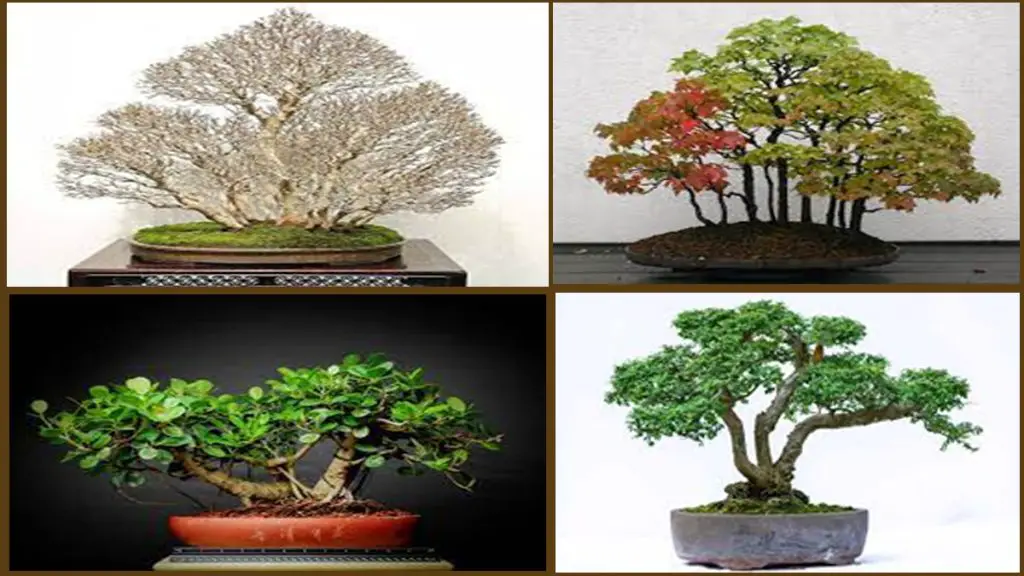
Related Article: Are Bonsai Trees Hard to Take Care of? Debunking Myths
Indoor bonsai
Be honest, When you hear about Bonsai, don’t you think about indoor miniature plants?
Yes, we all do. Basically, it is a common scene that comes to our mind. But, all the bonsai are not well suited for indoors. Most of them are required to grow outside and few variants are there which can be treated inside.
Some tropical and subtropical species of trees are suitable to grow indoors. Ficus bonsai, dwarf jade, carmona, sweet plum, etc. are good for growing inside the home or office.
There are some reasons why growing bonsai indoors is challenging. Bonsai, like other tropical or subtropical trees, require high intensity light, enough humidity, and a high temperature. Moreover, it needs an adequate amount of watering and fertilization for lack of root in a shallow pot with a small amount of soil.
So, in order to grow bonsai indoors, one must have the mentality that it requires daily care.
Many people take it as a hobby because it is relaxing and brings positive energy to the space. It brings oxygen and purifies the air, and that is how it takes care of the master’s mental health.
How to Get Cheaper Bonsai?
We are all aware that bonsai is an extremely expensive material to purchase.So, what’s the best way to get a cheap bonsai?
I think anyone who wants a bonsai is fond of its beauty and ready to nurture it. So, why don’t you start from the beginning? I know you are thinking, “How do I begin?” I can give you some ideas if you would like to know them.
Choosing the right tree in right way:
First, I will ask you to search for a small plant, which you can find on the roadside. Or you can grow it in a shallow pot from seed. Alternatively, you can obtain a cutting from somewhere. And make sure these are the tropical or subtropical variants. My suggestion is to avoid the tropical variety because it will die in winter, which is a waste of energy and hope. Indeed, there are some species suitable for beginners: ficus, juniper elm, gardenia, bougainvillea, etc.
Selection of a pot:
Now the second part is an expensive bonsai pot!!!!! Do we really need an expensive pot? I don’t think so. Why don’t we use any shallow pots? It might be a plastic or earthen shallow pot, which is really cheap to get.
Train your bonsai:
Now the hard part is coming: training the small tree. After some months or a couple of years, when the tree gets bushy, you have to train it by repotting, pruning, and styling. Moreover, there are some techniques on how to treat bonsai. Here, I’m going to give you some short ideas.
- Leaf trimming: removal of leaves or needles from a bonsai’s trunk and branches.
- Pruning the trunk, branches, and roots.
- Wiring branches and trunks helps the bonsai to give an expected design.
- Clamping used for shaping by bending trunks and branches.
- Grafting can be done into a prepared trunk .
- Defoliation will provide dwarfing of foliage.
Don’t you agree now? There are possibilities for growing bonsai with little money. Just be confident and don’t get discouraged by anything. Try, and you will succeed.
Best Bonsai Tools
What are you thinking? Let’s start a bonsai on your own to make your home more aesthetic. Indeed, the proper bonsai tools are very important for making impressive bonsai which is a vital part of the the art of bonsai.
To train the Bonsai you are gonna need some tools especially used to create bonsai. I’ll help to know about those tools now. Japanese tools are generally of high quality but expensive. However, we can get high-quality Chinese bonsai tools at a lower cost. Basically, these tools are made of black steel, which must be maintained or it will rust.
List of some bonsai tools for the starters:
- Shear: used to cut twigs, small branches, leaves and root pruning.
- Concave cutter: used to remove branches from the trunk.
- Rake with spatula
- Tweezers with spatula
- Wire cutter
- Pruning saw
- Pliers
- Rakes
To become an expert, you are going to need some more sets of tools. That is something we will discuss in another article. But to start now, it’s all okay for you. You can get these tools from eBay, Amazon, or any bonsai-related shop closer to your home. Moreover, effective bonsai tools can play an important role for making proper bonsai trees which will make your bonsai artistry great.
Happy Bonsai!!!!
You may also read: Best Bonsai Tools To Make A Proper Bonsai
How to Protect Bonsai
I know you are thinking, “Is it a baby?” Well, my answer is, “Yes!” A bonsai is just like a baby. We have to nurture it, take care of it, and also protect it.
Protect? From what? Animals? Nope, not from animals, but from adverse weather conditions. Basically, bonsai become dormant in cold winters and most of the parts of the world experience freezing temperatures.
So, what should you do in this situation? The recommendation is to keep bonsai in a greenhouse or cold frame for the time being. If the temperature in your area drops below 15 °F (-10 °C), it is a must to keep your bonsai in a cold frame. Basically, a cold frame will protect the bonsai from temperature fluctuations and big temperature drops at night.
I’m guessing you’re thinking about something else. Why is there no need for protection for the trees of the same species planted on the ground?
It is because of the difference in root growth. When a tree grows on the ground, the root grows deeper as it grows older. But with the same age going under heavy root pruning, a bonsai’s root cannot grow deeper like a ground one in a shallow pot. That’s the reason bonsai cannot get enough food, or their adaptation to adverse conditions is not well suited for them.
To know more about the Bonsai, Go Here >>>
Related Article: Best Bonsai Watering Cans Effective For Nurturing Bonsai
You may also read: How to Repot a Bonsai for Beginners: A Comprehensive Guide
Conclusion
The art of bonsai may have originated in China, but it was influenced by the Japanese. So, it’s known as a traditional Japanese art form now. There are some principles regarding making or creating bonsai. Indeed, it needs to be proportionate and asymmetrical, and its appearance must mimic nature. Proportion and balance needs to be perfect for the bonsai tree, leaves, and branches. Otherwise, it will not resemble a miniature of a fully grown tree.
Bonsai connects to another Japanese concept, which is wabi-sabi. Basically, wabi-sabi encompasses all sorts of Japanese art forms and places a focus on subtle refinement and peaceful simplicity. Moreover, the bonsai cannot be complete without a pot that matches its resemblance and beauty. It has the purpose of putting a feeling in viewers’ minds.
In conclusion, the art of bonsai is a mesmerizing journey that combines horticulture, creativity, and philosophy. Basically, it is a testament to the delicate balance between nature and human craftsmanship, allowing us to cultivate living works of art that evoke a sense of serenity and contemplation. Moreover, the meticulous techniques and profound wisdom passed down through generations, bonsai enthusiasts can create miniature masterpieces that capture the essence of nature’s beauty in a harmonious and captivating form. The art of bonsai teaches us patience, mindfulness, and the importance of connecting with the natural world, ultimately leading to a deeper appreciation for both the art form and our own existence.
Related Article: Essential Gardening Tips for Beginners: Cultivate Your Green Thumb
You may also read: Ming Aralia Bonsai Trees: A Unique Addition to Your Garden

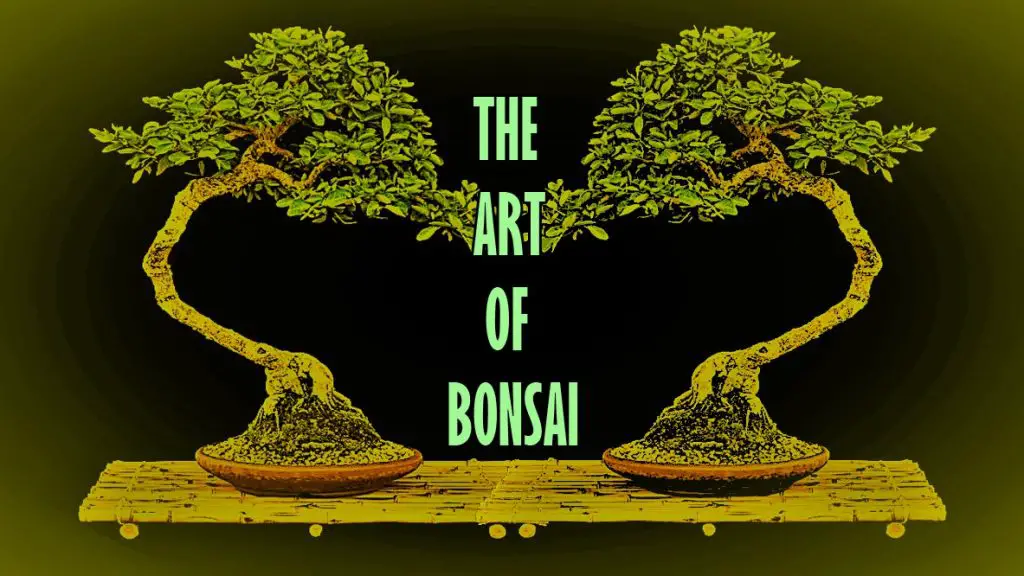
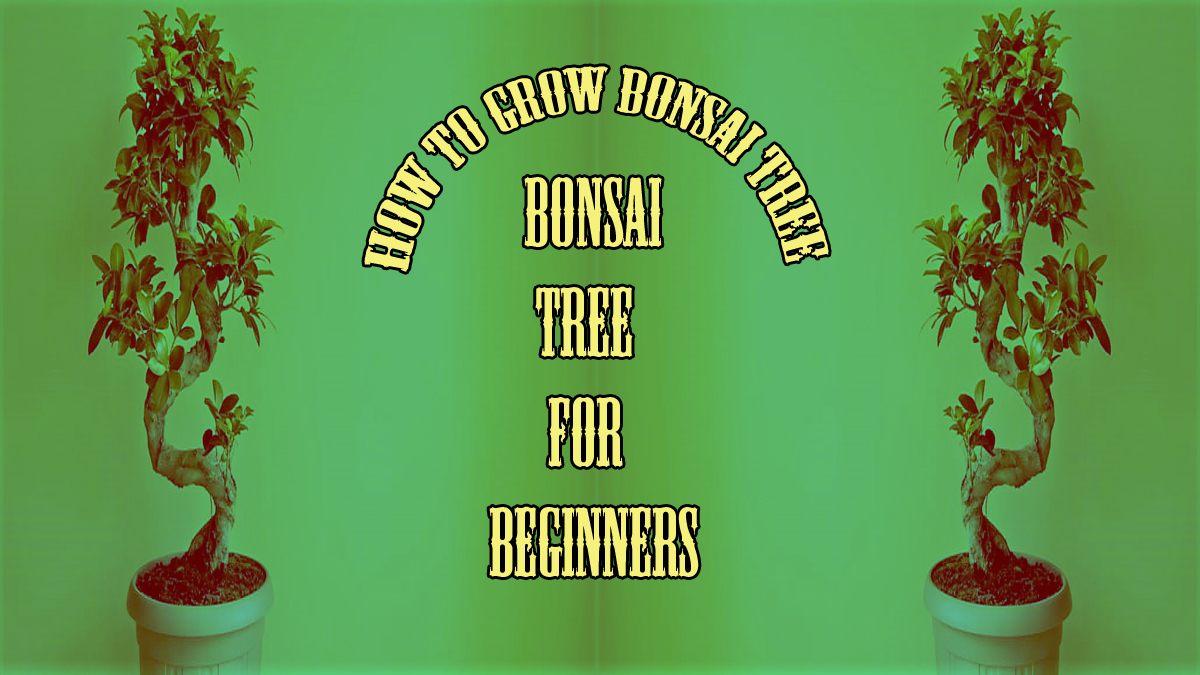
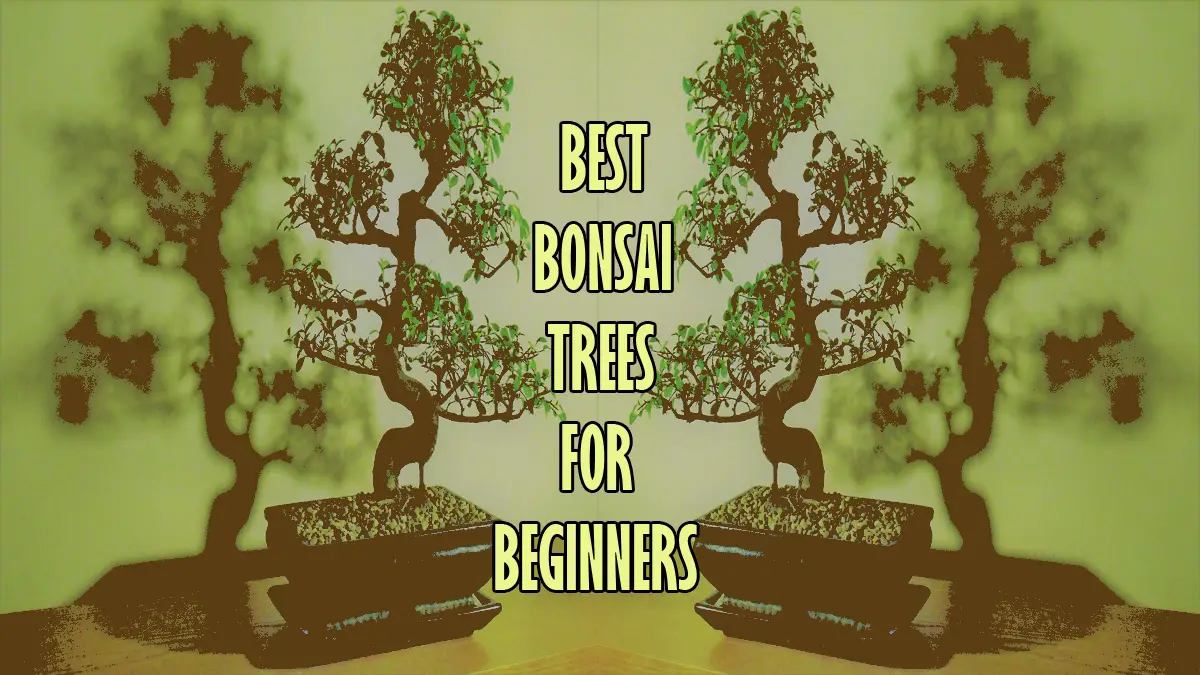
Splendid👍. Detail information about bonsai. Excellent writing too. Carry on.
Thanks for being with us. Stay tuned.
Pingback: 10 Best Bonsai Trees for Beginners - Dwell Gardens
Pingback: Best Bonsai Tools To Make A Proper Bonsai - Dwell Gardens
Pingback: Bonsai For Beginners: How To Grow Bonsai Tree - Dwell Gardens
Pingback: Best Bonsai Watering Cans Effective For Nurturing Bonsai - Dwell Gardens
Pingback: The Art of Garden Tool Organization: A Prerequisite for Green-Thumbed Success - Dwell Gardens
Pingback: Ming Aralia Bonsai Trees: A Unique Addition to Your Garden - Dwell Gardens
Pingback: How to Repot a Bonsai for Beginners: A Comprehensive Guide - Dwell Gardens
Pingback: Bonsai Pruning Techniques: Master the Art of Miniature Trees - Dwell Gardens